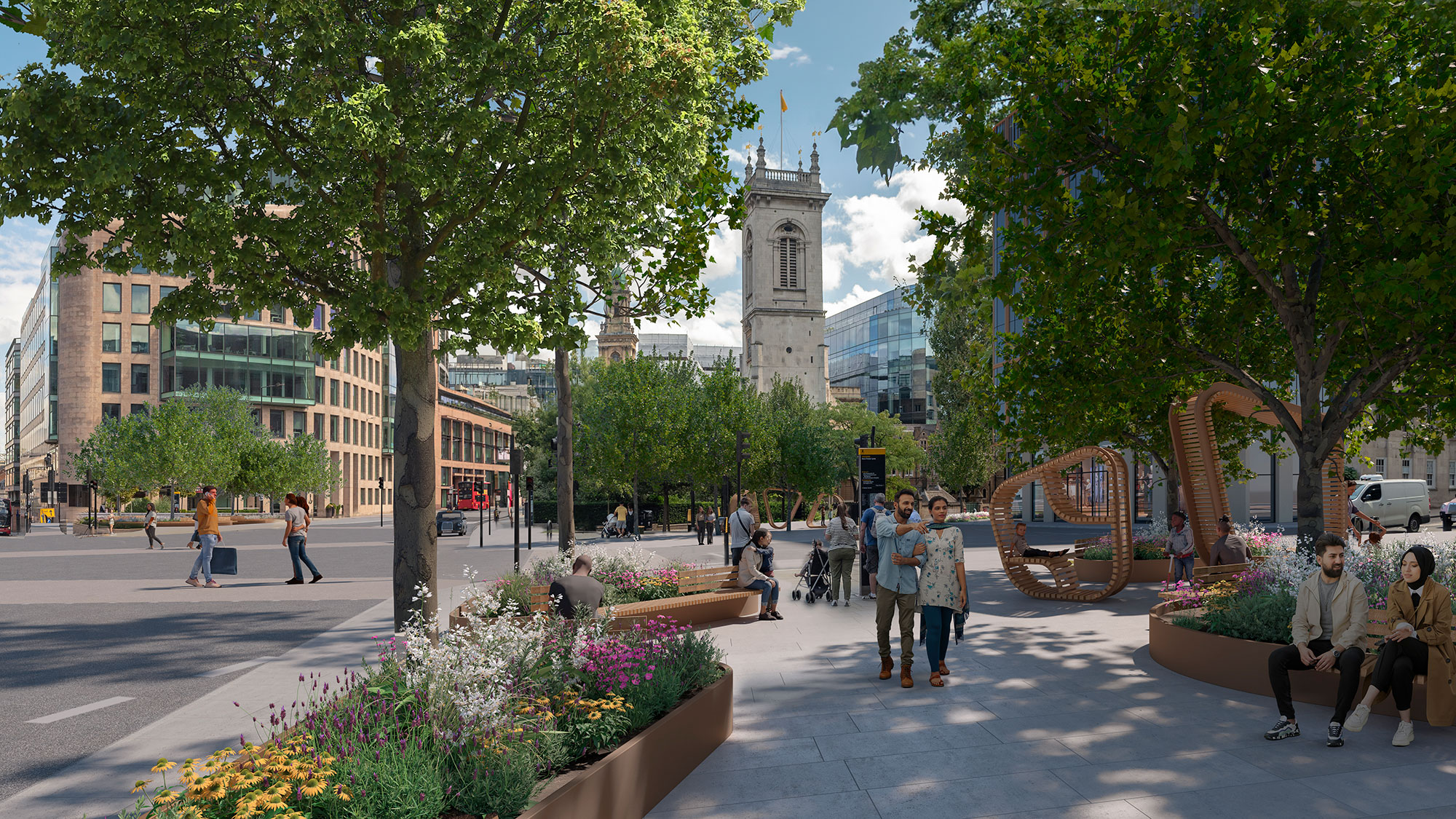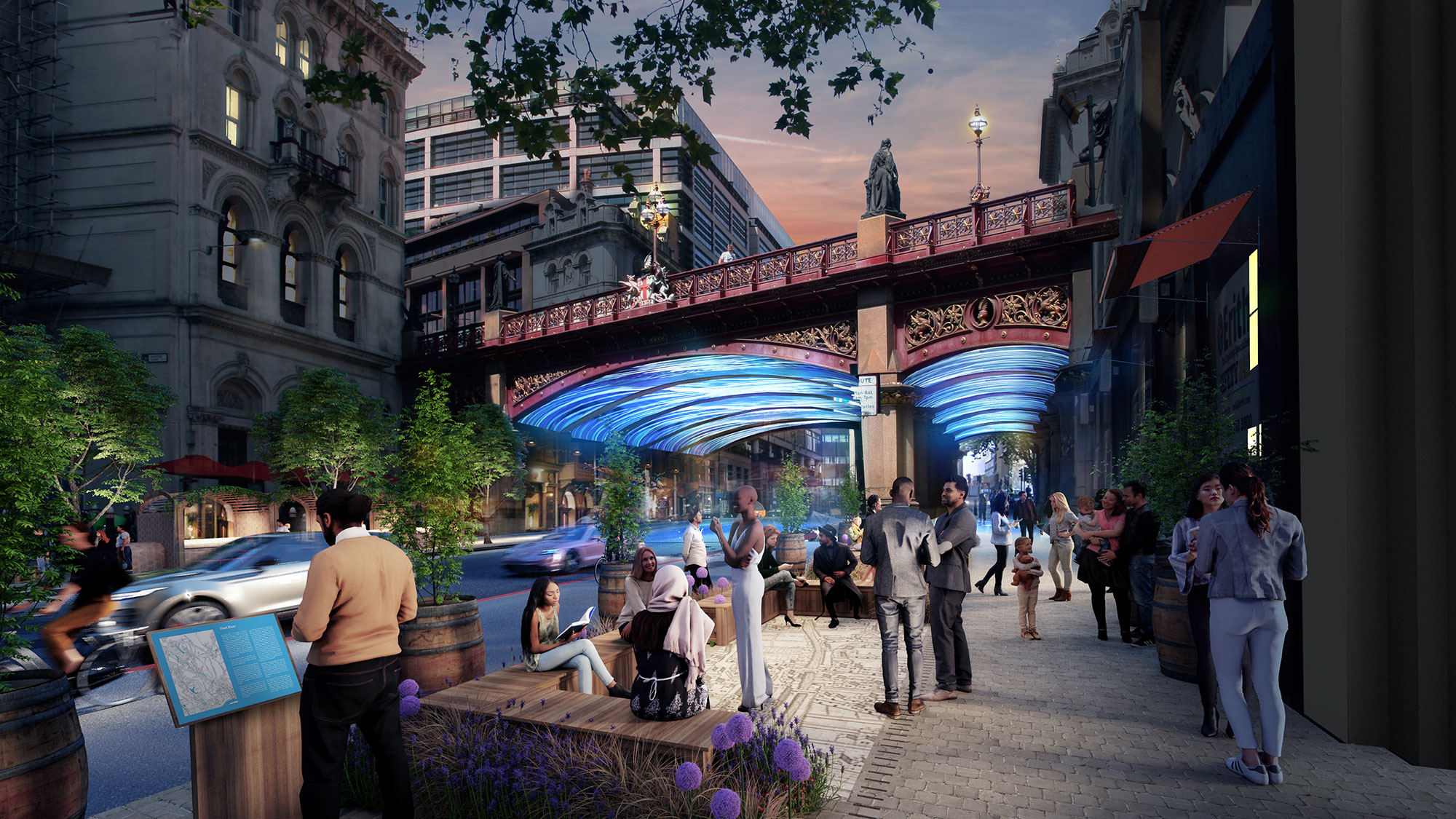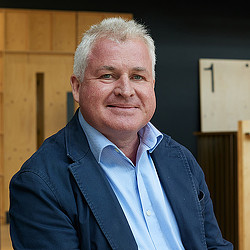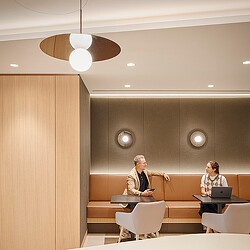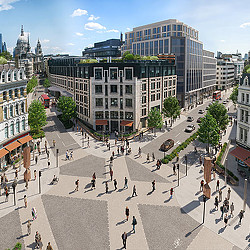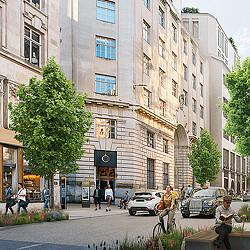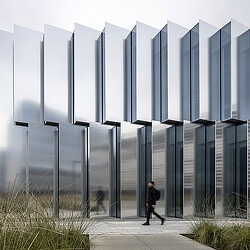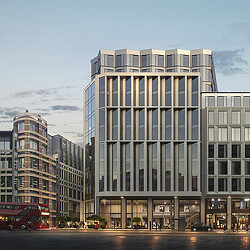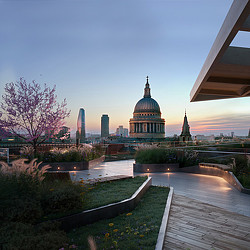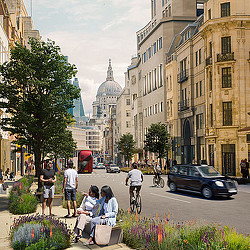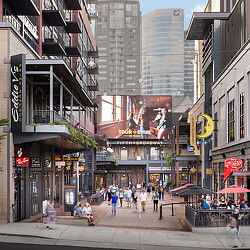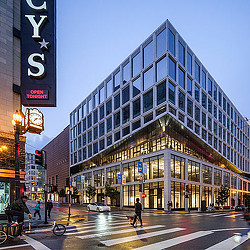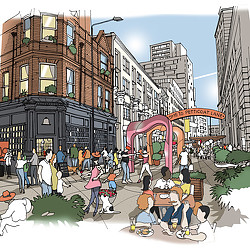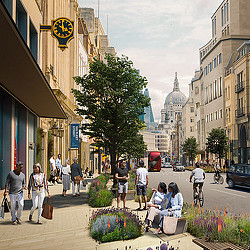A New Strategic Vision to Revitalise London’s Fleet Street Quarter
How the Fleet Street Quarter Public Realm Strategy is transforming London’s Central Business District into a vibrant Central Social District.
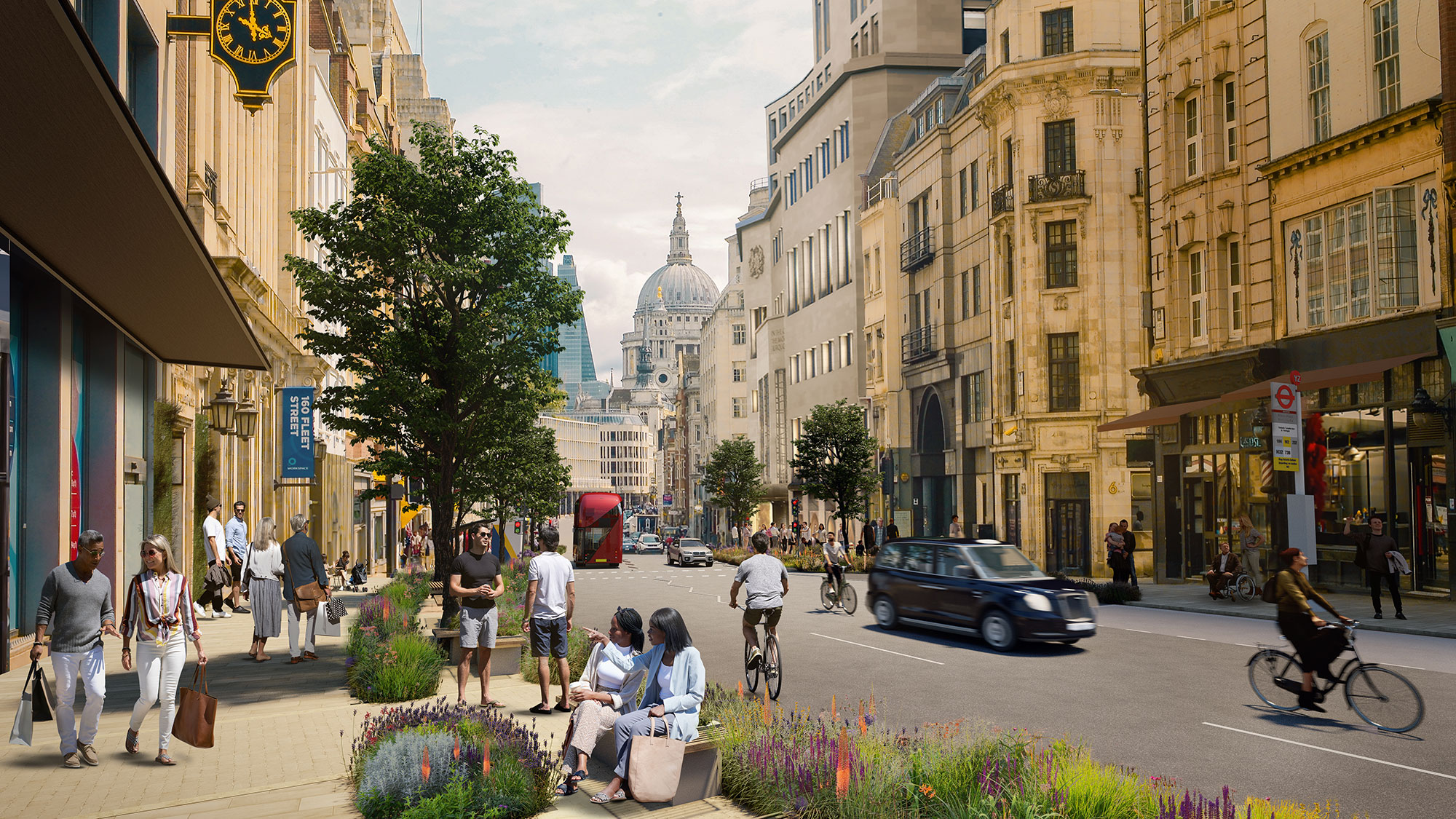
In the heart of London’s Central Business District (CBD), a dynamic shift is underway that is challenging the traditional notion of office-centric city centers to embrace a rich blend of activities. One important trend highlighted in Gensler’s 2024 Design Forecast is “mixed-use lifestyle districts bring cities back to life,” the notion that monolithic downtowns are changing to become more multimodal and experience-driven in response to the changing ways people work and engage with urban environments.
We asked 26,000 residents in 53 cities across six global regions what they thought in our City Pulse Survey. The results highlight the need for CBDs to be activated, mixed-use, multimodal urban centres if we want them to be perceived as a desirable destination rather than an obligation.
Only 20% of survey respondents who were classed as ‘visitors’ — meaning that they neither live nor work in their city’s CBD — go there weekly and are the least likely of respondent groups to feel that their CBD is iconic, grand, or blends in with the surrounding neighborhoods. So how do we change this perception? The top predictors of a positive CBD experience include diverse food options, quality dining, access to parks, opportunities for discovery, attractiveness, affordability, and personal safety. CBDs that meet this experience whilst prioritising informal gathering spaces, promoting walkability, and pursuing activation through community amenities will be the successful central social districts of the future.
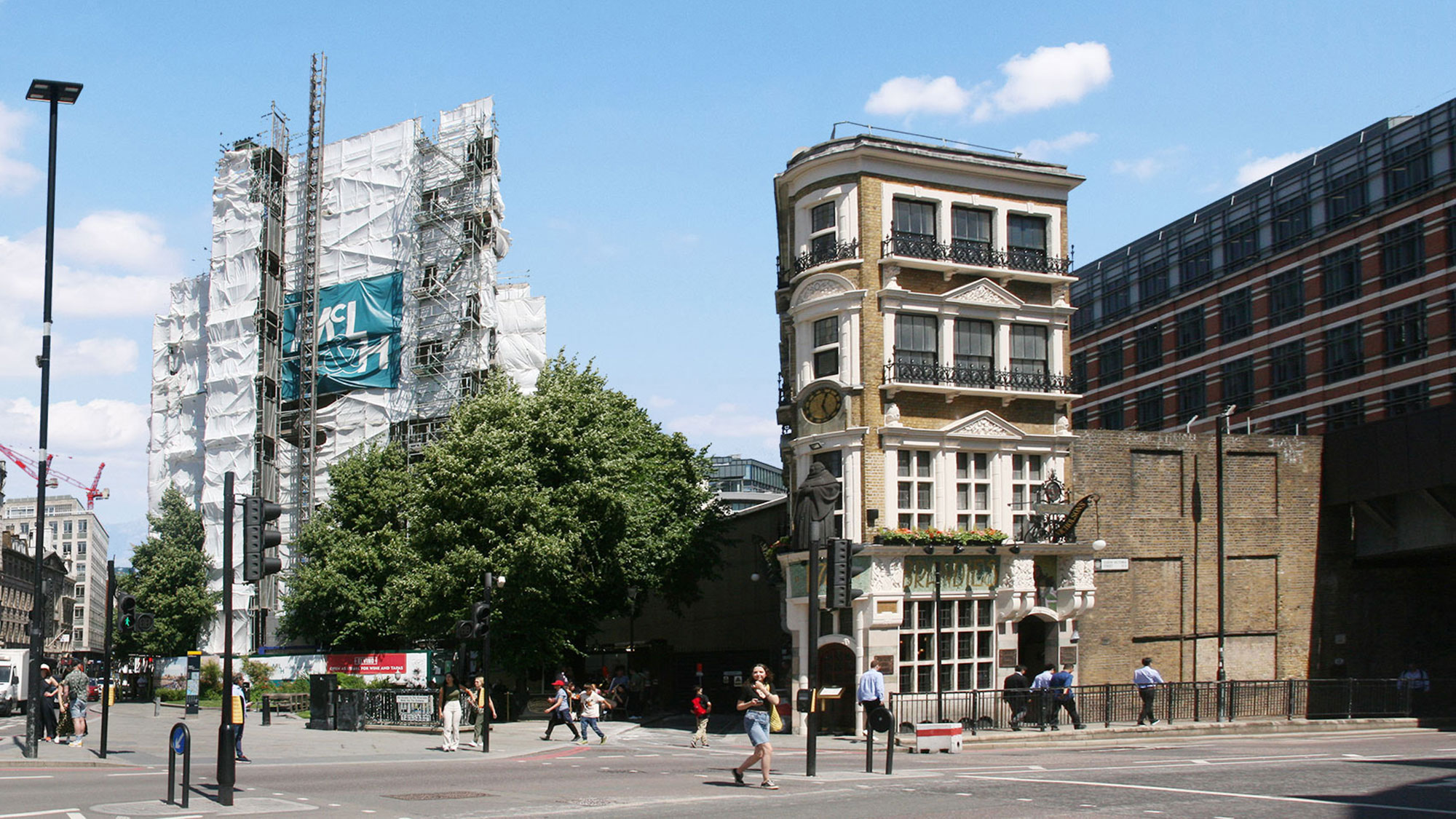
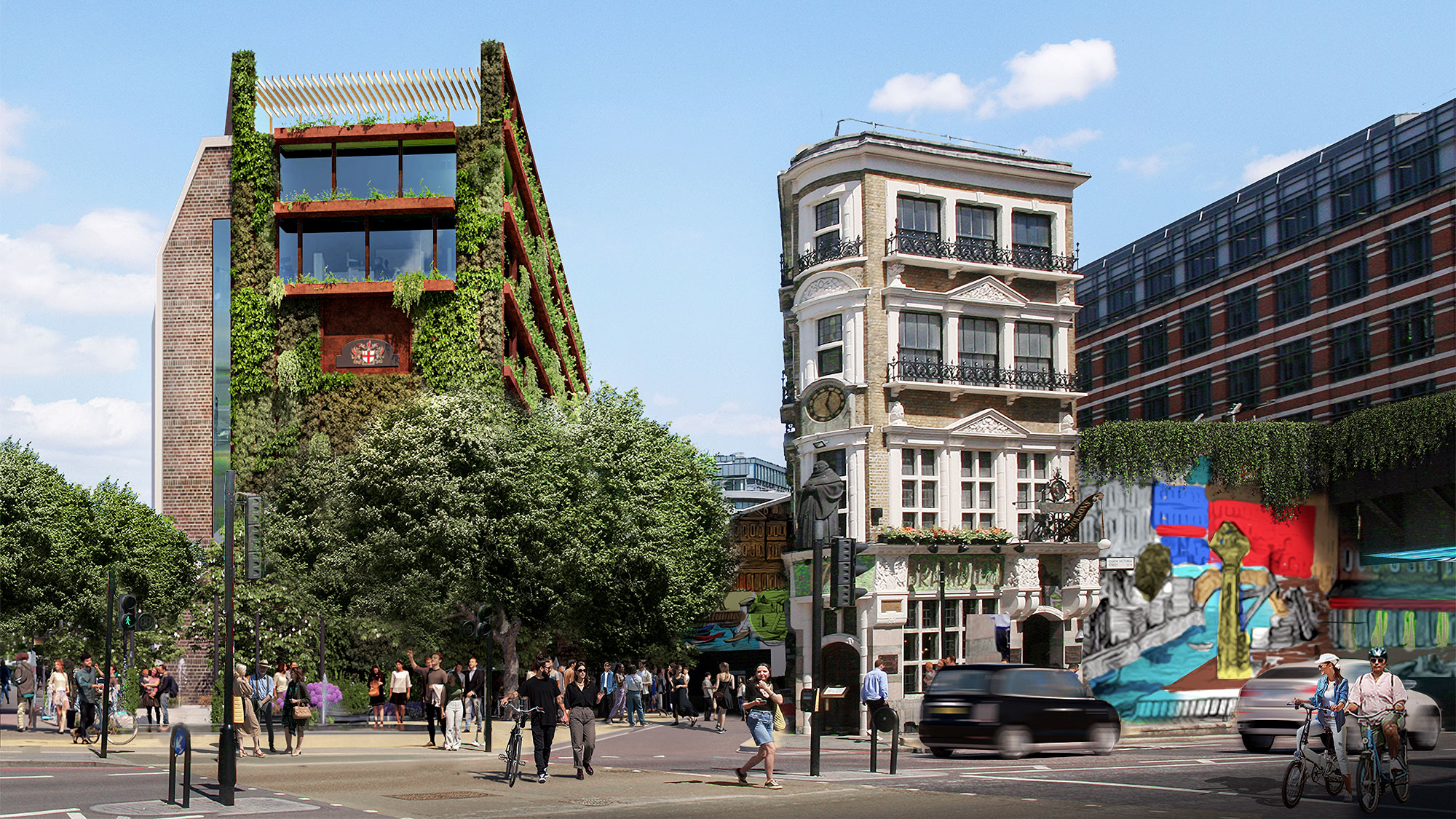
Fleet Street Quarter: An example of how mixed-use lifestyle districts can bring cities back to life
Gensler, in collaboration with Fleet Street Quarter BID, the City of London, and key stakeholders, is at the forefront of this transformation, proposing a revitalisation of the entire Fleet Street Quarter. The Fleet Street Quarter Era of Change Strategy, a visionary 10-year plan, seeks to redefine the area, making it not just an office hub but a vibrant Central Social District (CSD) that serves as a ‘bridge’ between the City and the West End.
Fleet Street, a world-famous thoroughfare with incredible rail connections and rich history, has long suffered from a lack of vitality outside traditional office hours. Like many urban cores, there is a need to make the district attractive, both to fill new office buildings and to align with the evolving patterns of work. Creating an appealing environment that goes beyond office walls and extends to evenings and weekends is key to encouraging people back to the workplace and ensuring that this area of London becomes a more vibrant activity hub.
Gensler’s aim is to enhance daily life through design, creating spaces that support work-life integration and community engagement. This proposed strategy has the potential to be the most extensive transformation in the City of London in 150 years, identifying 34 opportunities to create a more inviting public realm that will enhance movement and walkability, provide green spaces, and improve accessibility.
The strategy aims to create 3,000 square meters of additional pedestrian space, a 25% increase in public realm usage, a 50% increase in plant and animal biodiversity, and a 75% reduction in service and delivery motor vehicles. It also aims to encourage a 50% increase in workers returning to the office and a 50% increase in footfall to historic and cultural destinations.
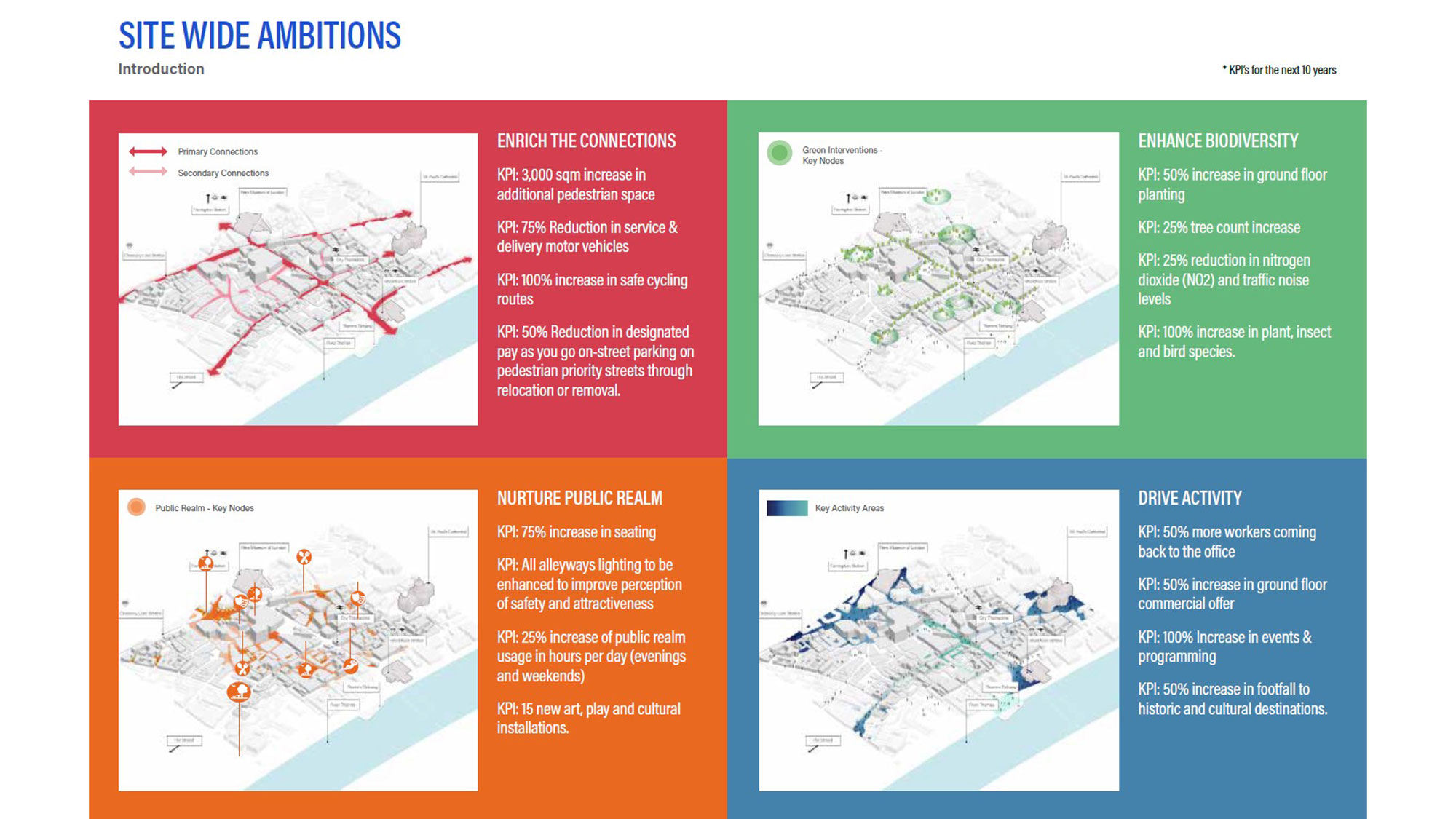
We’ve proposed a vision for a hierarchy of spaces that provide an atmosphere where shops, cafes, bars, and restaurants thrive, transforming the area into a destination that draws people in and encourages them to stay. Office workers also want to be able to break away from traditional work routines to run lunchtime errands, explore cultural institutions, enjoy activities and hospitality offerings, and contribute to a vibrant community, all within and around the workday. This vision challenges the mono-use model seen in the traditional CBD and offers a more holistic approach to city living, more akin to the West End.
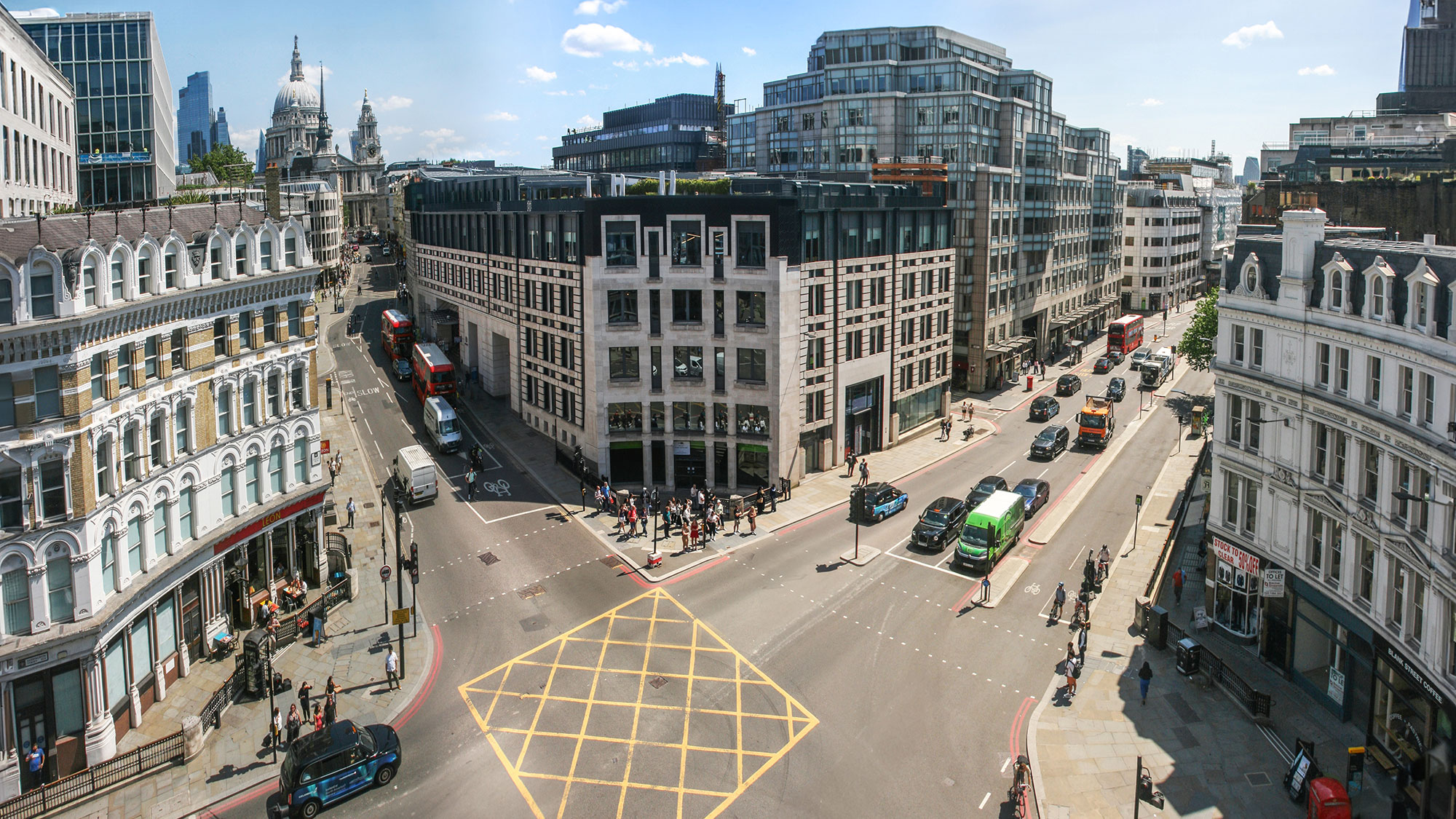
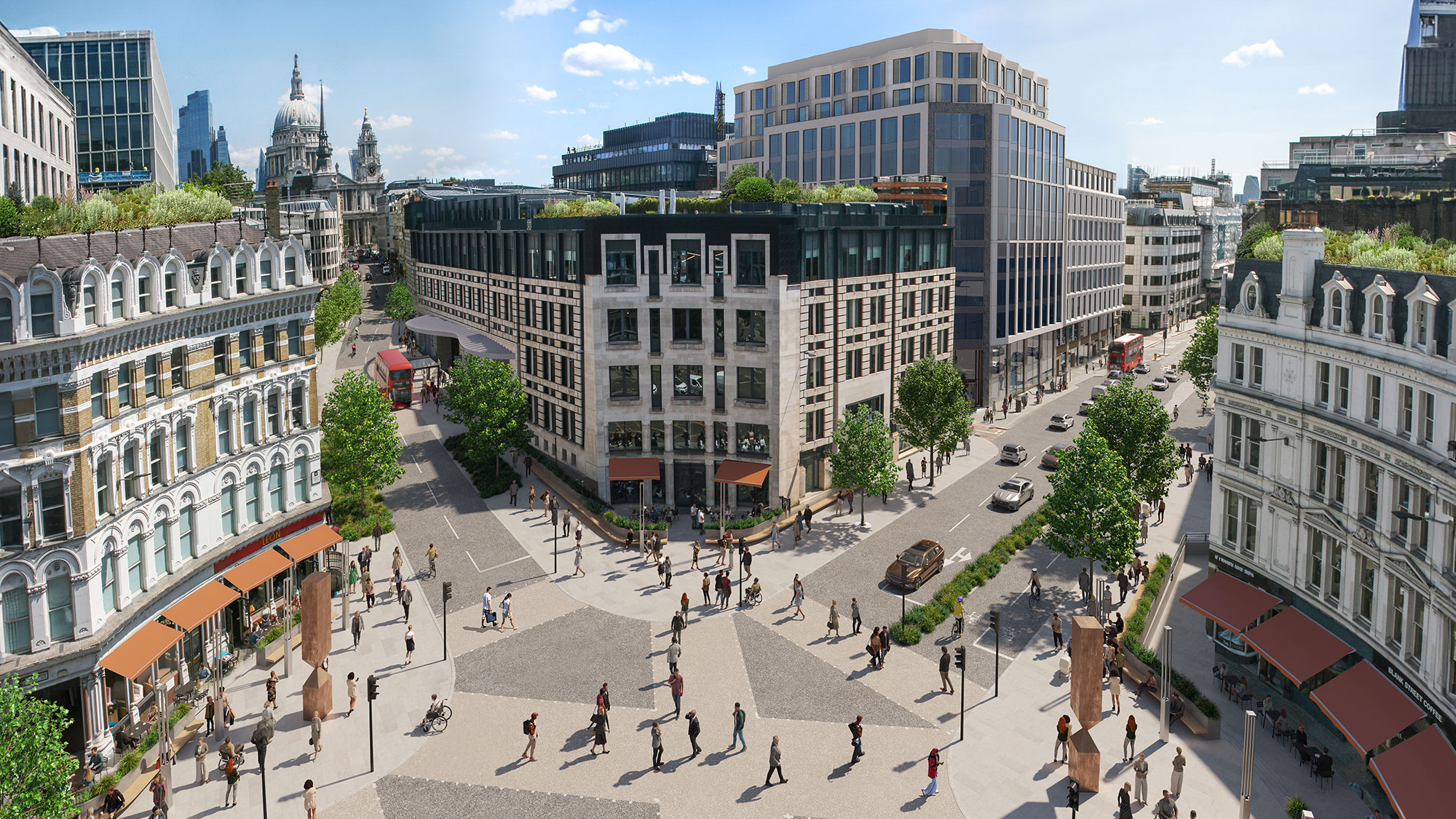
We believe in the power of proven methodologies combined with forward-thinking strategies to deliver impactful design solutions that stand the test of time. Gensler’s Fleet Street Quarter Era of Change Strategy represents more than a physical transformation; it symbolises a shift in the very essence of city centers. The deliberate move from CBD to CSD aligns with global research and trends, emphasising the importance of creating vibrant, mixed-use urban ecosystems that cater to the evolving needs of a changing workforce.
For media inquiries, email .

